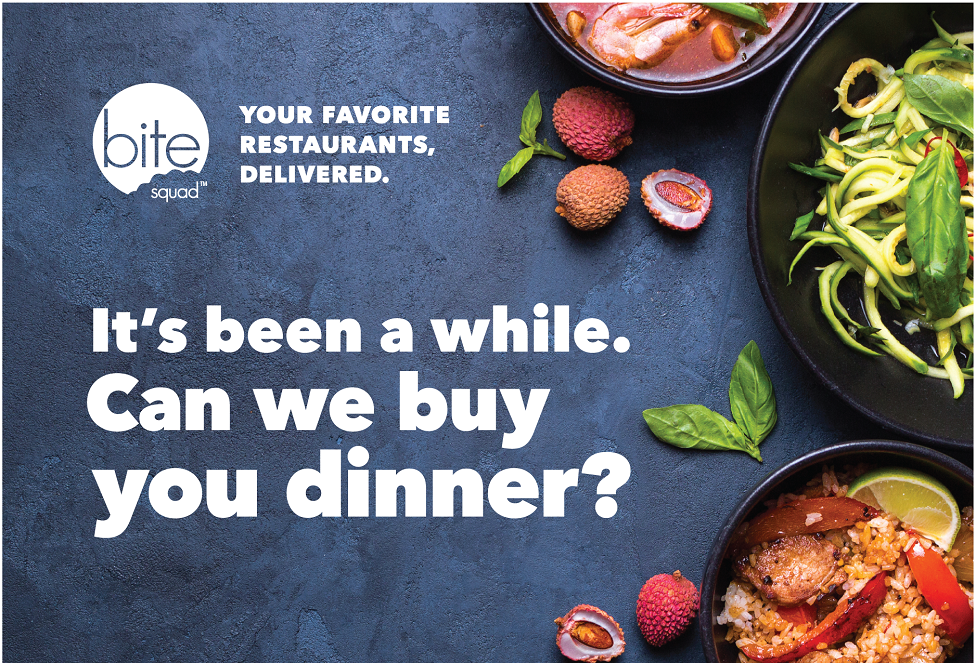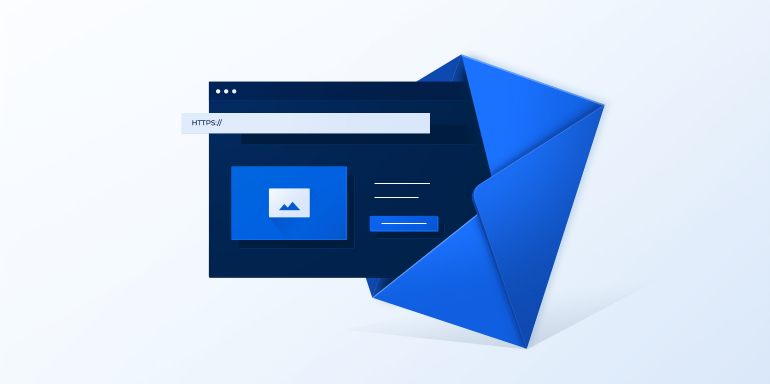- Why add direct mail to digital campaigns?
- Direct mail conversion rates
- 3 Ways to use postcards with post-click landing pages
- post-click landing pages to trigger direct mail
- Use a post-click landing page to build a direct mail list
- post-click landing pages to host a direct mail offer
- How to make direct mail automation work
A spike in unsubscribes. Sagging open rates. Diminishing returns on each email you send.
These signs of email fatigue should worry any marketer. But it’s not just you. Email fatigue is a phenomenon that reaches across audiences. This year’s Adobe Consumer Email Survey reported that consumers are spending 27% less time on email compared to last year, and one quarter are making an effort to check their email even less than they do now. Though email remains the top channel for marketing communications:
- The share of customers who prefer to hear from brands via email declined 11 percentage points between 2017 and 2018.
- The average respondent opens less than a third of the email offers brands send them, and reads less than two-thirds of those.
The absolute worst thing marketers can do for these burned-out consumers is send another email. But you still have metrics to hit, and “just email less” isn’t the strategy to hit them.
Instead, it might be time to think beyond the inbox and send direct mail with striking postcards, like this:

Instead of buying addresses from list brokers, marketers use their own contact lists.
And instead of working with direct mail firms to send big batches of mail at once, they’re using marketing automation to trigger direct mail based on consumer behaviors.
In this post, I’ll show you how to borrow some of their tricks and use post-click landing pages and direct mail marketing together to get and keep more customer attention.
Why add direct mail postcards to your digital campaigns?
Digital-first brands are discovering direct mail because it’s simple, attention-grabbing, and it works. Direct mail postcards are a particularly effective way to do an end-run around your target customer’s crowded inbox.
Every year, the USPS enlists thousands of households to track the mail they receive and their responses to it. In 2017, the survey found that 74% of households either read or scan the direct mail they receive. And they intend to act on it. Respondents said that they planned to take advantage of 11–12% of the direct mail offers they received. (If you’re a high-end brand, note that that percentage rises with household income.)
That means two things:
- Direct mail gives you access to a pretty engaged audience.
- Any direct mail piece should be a quick get, to catch those scanners. No hiding your message behind an envelope.
Given the statistics, if you can deploy direct mail postcards easily and inexpensively, running a direct mail campaign seems like a no-brainer. But first, let’s take a closer look at the kind of results you can look forward to with direct mail.
What kind of conversion rate can you expect with direct mail?
Direct mail is superior to other traditional media like TV or print ads in that it’s easier to track, especially as part of an integrated online/offline campaign. Tactics like unique offer codes, personalized URLs and dedicated post-click landing pages can all help you see how many customers are responding to your offers.
Here’s what we know about direct mail conversion rates in general — or response rates, as the direct mail world generally puts it. According to the DMA, direct mail offers convert at an average rate of 5.3% for in-house lists and 2.9% for prospect lists. For prospects, that’s on par with average email click rates. For existing contacts, it’s quite a bit higher.
And direct mail conversion rates may even be climbing. The DMA also reported that in 2016, overall direct mail response rates increased by 43%, while prospect response rates more than doubled.
There’s even more room for optimism here, though, because we can assume that the majority of direct mail marketers aren’t pairing direct mail with marketing automation quite yet. The technology is pretty new. But we know that behaviorally triggered emails get better click rates (8.2% compared to 3.4% for other emails, according to Epsilon). We should expect behaviorally triggered postcards to get better response rates, too — especially if they’re paired with an equally powerful, highly-targeted post-click landing page.
Finally, remember that consumers want to act on 11–12% of the direct mail offers they receive. Consider adding a follow-up message for those who loved your offer but accidentally swept it into the recycling bin. Treat your postcards as elements of a larger online/offline marketing campaign, and you might easily bump your conversion rate into the double digits. (Which tracks with the results of real-world automated direct mail campaigns I’ve seen recently.)
Now let’s talk details. How exactly do you set up an integrated digital/direct mail campaign?
3 simple ways to use post-click landing pages and direct mail together
post-click landing pages can play into your automated direct mail campaign in several ways. Here are a few examples to get the wheels turning.
1. Use a post-click landing page to trigger direct mail right away
Conferences, trade shows, and other high-foot-traffic events tend to produce two types of leads. The focused ones, the kind who strike up a 20-minute chat and set themselves a reminder to follow up before they’ve even left your booth. Everybody loves those leads.
Then there are the leads who swoop in, grab whatever freebie you’re offering, toss a brochure into their bulging tote bag, and rush off to do the same thing with a dozen other vendors.
The latter aren’t necessarily bad leads. They’re just hard to pin down, and even if they give you an email address, there is no guarantee they’ll remember who you are by the time you email them.
Direct mail can help you make a stronger second impression. Today, lots of conference booths are stocked with iPads to make opting into a list or a drawing as easy as possible. The simplest way to get those signups is to build a post-click landing page like this one (example page for use at a live event):

If your post-click landing page sends leads to a marketing automation platform that’s integrated with direct mail software, you can trigger a follow-up postcard every time someone submits your form. (No marketing automation software yet? You can also export your leads into a CSV file and upload that to your direct mail platform.)
Your postcard should both remind your lead of your encounter at the event and give them an extra reason to follow up with you.
For bonus points, if your post-click landing page had a striking design or your event booth was heavily branded, consider designing your postcard to match. It’ll stand out on your lead’s mail table and help jog their memory:

2. Use a post-click landing page to build a direct mail list for later
Some businesses won’t have a customer’s mailing address until they buy something. But for others, it makes sense to ask for an address early on. And whenever you’re collecting someone’s address on a post-click landing page, you have a natural opportunity to add them to a direct mail campaign.
Here’s an example of a post-click landing page for a home-services booking site that requires an address:

Now, it’d be possible to send out an automated postcard every time someone submits the form on this page, but that’s probably not a great idea. If the page is getting lots of traffic from Google Ads or social media ads, that could make for a lot of mail, and some visitors will have already converted by the time they get the postcard.
But what if it’s been two weeks, and a lead still hasn’t used their discount code, created a user profile, or taken whatever other action you’re trying to prompt?
In that case, an automated reminder postcard could be the perfect nudge. To implement this, you would just set up a workflow in your automation platform that’s triggered by submitting your post-click landing page form. Next, you would build in a two-week delay and add an if/then branch to check whether the post-click landing page visitor converted.
If they haven’t, your automation workflow can take action and send them a postcard.
3. Use a post-click landing page as the destination for a direct mail offer
When you need to launch a super targeted page for a well-defined audience, a post-click landing page is your best bet. That makes a post-click landing page the perfect destination if you’re asking your postcard recipients to redeem an offer online.
One of the best ways companies use automated direct mail is customer retention or reactivation. If you have a list of inactive customers — or an automation workflow set up to scan for inactivity — you have an ideal audience for a direct mail re-engagement campaign.
For instance, you want to convert more trial customers into subscribers. You could send them a postcard with a re-engagement offer that directs them to a post-click landing page like this one:

This page keeps things simple, but the form contains one clever way to help you segment your audience further: an email preferences button. Customers have the option to get regular emails or only the promised discount.
And those customers who don’t want regular emails? They’re a perfect audience for future direct mail campaigns. Just have your automation workflow pull them out of all but the most essential emails and add them to a direct mail nurturing sequence.
In general, great direct mail post-click landing pages aren’t that different from other post-click landing pages. The same optimization principles apply. The magic is in how you fit them together to convert customers from more angles.
How to make direct mail automation work for you
To sync your online and offline campaigns like these, you need three pieces of technology:
- A post-click landing page solution
- Direct mail automation software
- A marketing automation platform that integrates with both
For instance, you might use Instapage to build your post-click landing pages, Inkit to send postcards, and HubSpot to further segment your post-click landing page leads and control the timing of those postcards.
Depending on your marketing automation capabilities, you can go wild with the possibilities. Direct mail campaigns carefully synced with social retargeting ads. Personalized postcards using dynamic content insertion. Artisanal, small-batch postcard campaigns targeting your absolute highest-value leads.
Even the simplest automated direct mail campaigns can achieve excellent results. By breaking out of the inbox, you’re not just improving your marketing results. You’re re-energizing your audience and engaging with them in a way that’s hard to ignore.
To turn ad clicks into conversions, create dedicated, fast-loading post-click pages for every offer. See how to provide all of your audiences with unique post-click landing pages by signing up for an Instapage Enterprise demo today.
About the author
Michael McCarthy is the CEO and co-founder of Inkit, a direct mail automation platform that makes sending a postcard as easy as sending an email. Based in Minneapolis, he and his team spend their days strategizing to help digitally savvy companies improve their marketing results with direct mail.

See the Instapage Enterprise Plan in Action.
Demo includes AdMap™, Personalization, AMP,
Global Blocks, heatmaps & more.
